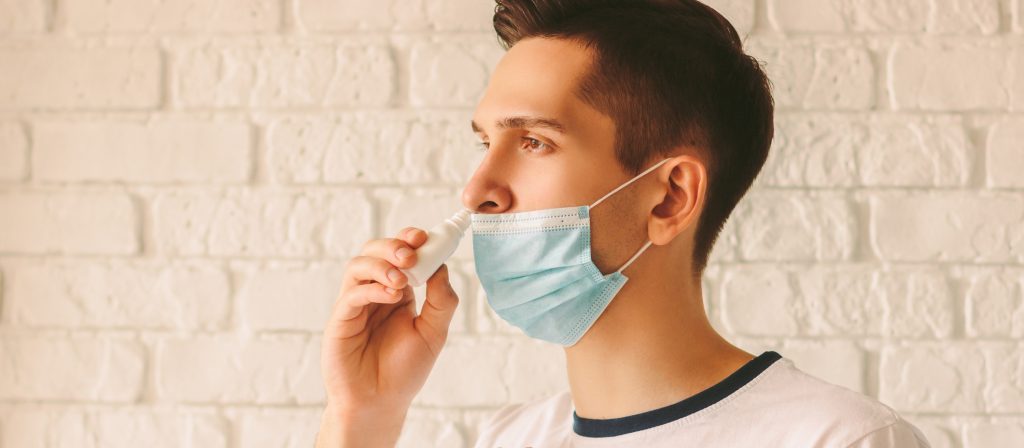Marijuana and meds: Time to talk
Private consultations could turn supposed ‘gateway’ drug into ‘new normal’ for improved health
Remember those funny memes of a grandma getting high by taking a hit (or two) on a joint? Well, with increasing research into the benefits of medical marijuana to reduce pain and other side effects of everything from cancer to multiple sclerosis, it’s not so humorous anymore. And its use is growing exponentially.
The use of medical cannabis or marijuana has been the source of great debate within the medical community, as well as across states, courts and voters. Where and how it’s legal, how it’s perceived and how it should be prescribed and used, continue to evolve. Most recently, that’s evidenced by CBS rejecting an ad for a medical marijuana supplier to run during Super Bowl VIII.
I wrote a blog last year about the use of medical marijuana across America, and answered some of the questions I’ve frequently been asked as a pharmacist. Most of that information remains pertinent and I encourage you to check it out. But we appear to be at a tipping point towards broader use and acceptance. But we still need more testing, open and honest conversation between patients, their doctors and pharmacists, and careful consideration of its potential effects with other medications being taken or considered to be prescribed.
The law
Medical marijuana refers to using the whole, unprocessed marijuana plant or its basic extracts to treat symptoms of illness and other conditions. The U.S. Food and Drug Administration (FDA) has yet to recognize or approve the marijuana plant as medicine. However, scientific study of the chemicals in marijuana, called cannabinoids, has led to two FDA-approved medications that contain cannabinoid chemicals in pill form. Continued research is likely may lead to more approved medications and uses.
Because the marijuana plant contains chemicals that may help treat a range of illnesses and symptoms, many people argue that it should be legal across the U.S. for medical purposes. A growing number of states have already done so.
As of December 2018, medical marijuana is legal from Alaska in the north to Florida in the south — 33 states and the District of Columbia. Ten states and DC have legalized recreational marijuana as well. Each have different standards for how to qualify for a medical marijuana prescription and how much and where you can receive your supply, so check local sources. Until a federal law is passed, this variance from state to state will continue…something to consider, especially as you travel or move.
The medical studies
Many highly respected health researchers continue to study the potential benefits and risks of using everything from the whole marijuana plant to individual natural-occurring or synthetic cannabinoid compounds, typically for their potential pain management properties. But the positive effects of medical marijuana on other conditions is also coming to light.
The National Institutes of Health’s NIH Pain Consortium supports research efforts to examine the therapeutic potential of cannabinoids across a variety of pain conditions. In two other studies using mobile application technology, researchers at The University of New Mexico also found that medical cannabis provides immediate symptom relief across dozens of health symptoms…insomnia, anxiety, irritability, stress, depression, muscle spasms (restless leg syndrome), insomnia and more, with relatively minimal negative side effects. Reports of other studies, such as this article from Mayo Clinic, have also found it effective in treating side effects of ALS, Alzheimer’s, Crohn’s, HIV/AIDS, epilepsy or seizure, multiple sclerosis, nausea from cancer treatment, Tourette syndrome and more.
The National Cancer Institute also has reported other possible benefits including the blocking of cell growth, preventing the growth of blood vessels that supply tumors, antiviral activity and more.
A gateway or treatment?
Today as studies are finding the benefits of medical marijuana on a growing volume of conditions, it’s also entirely possible a drug that was widely considered a “gateway drug” to more highly addictive drugs could actually be a tool in the fight against opioid abuse, unnecessary Emergency Department visits, hospitalizations and procedures, and many other less-desirable and more-expensive treatments and less-optimal outcomes.
The societal shift
As more studies are published and usage expands, people who would have never considered themselves a “stoner” are taking a fresh look at incorporating medical marijuana in their treatment regimen. The aging population is dealing with insomnia and body aches and pains that can reduce their quality of life and mobility, and are seeking new ways of managing their conditions. Grandma is spreading the word about her positive experience with medical marijuana, helping reduce its stigma and making it part of the “new normal.”
The conversations
As with the use of over-the-counter (OTC) meds and supplements, it’s essential that patients are completely open about their use with their medical care team including their pharmacist. They must have full and frank conversations about what they’re taking — including marijuana — so all potential risks can be considered in shaping and monitoring their drug regimen.
Without those discussions, there could be serious problems with over-sedation, such as breathing problems, tachycardia, disorientation, anxiety, psychosis and other dangerous side effects. The risks also include taking medical marijuana with depressants (alcohol, barbiturates and benzodiazepines), the blood-thinner warfarin, anticholinergics (Benadryl/diphenhydramine, Thorazine, antipsychotics, Parkinson’s medications) and caution is advised with protein-bound medications such as glipizide, diuretics and statins. On the good side other than the actual benefits, medical marijuana may enable clinicians to simplify your total medication regimen, saving you from any of those prescriptions’ side effects and costs.
Like all other potential drug reactions, obviously this all requires broad pharmacological knowledge. Clinicians and patients need to be well-informed regarding and other potential benefits and risks, and how it can be legally ordered based on laws in their area.
Physicians and pharmacists alike may have to set aside some of their own biases against the use of marijuana and lose that past “Woodstock/hippie” image in their head. Today as research and adoption both grow, medical marijuana is increasingly entering the real world of prescribing and treatment.
This hasn’t proved to be as big of a challenge for the states who legalized medical marijuana or recreational use early. For instance, RxLive® has many clients in Oregon, one of the first states to broadly legalize marijuana. There, patients talking about their existing or requested use — and most physicians being knowledgeable about its likely impact on a drug regimen — is now far more routine than a stigma.
Pharmacists often don’t get involved in the conversation on marijuana only after the patient has begun its use. However, pharmacists are specially trained to screen for drug interactions and provide medication counseling. As medical cannabis becomes more accessible, pharmacists will inevitably be answering more questions about its use during their day-to-day interactions with patients.
Privacy and honesty
This may well be one of the many conversations a patient isn’t comfortable holding at the pharmacy counter, with others waiting to pick up their prescriptions within earshot. Yes, most pharmacies have a small consultation room which affords some privacy. But pharmacists also don’t typically have much time to spend doing so, due to staff shortages and the assembly-line pace of dispensing prescriptions.
That’s one of the many reasons why we established RxLive…to afford the patient privacy and take the time to have these frank conversations so essential to optimizing clinical outcomes. As the usage and even types of medical marijuana continue to grow, know that our team of telehealth clinical pharmacists are keeping abreast of developments in products, potential side effects and the laws to help guide our clients — patients and physicians alike — to better, safer health decisions.




